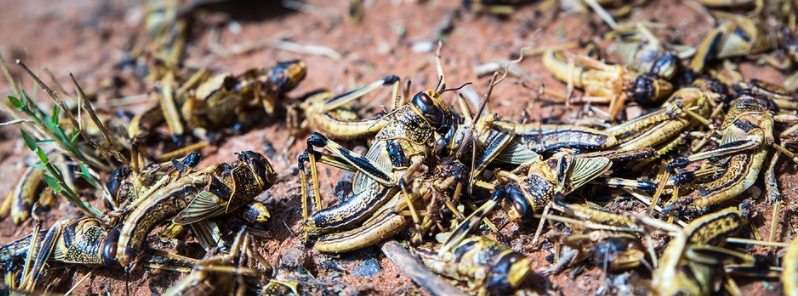Ethiopia battles worst locust plague in 25 years

Ethiopian farmers are battling the country's worst locust invasion in 25 years, according to the UN Food and Agriculture Organization (FAO), which urged officials to scale up survey and control operations in its situation update on November 9, 2020. More than 200 000 ha (490 000) acres of land have been damaged since January this year, threatening food supplies.
"They have destroyed my crop. I do not know what to do. We have lost food and battle against desert locusts," farmer Leila Mohammed told Anadolu Agency. She was ready to harvest her millet crop when she saw gigantic swarms of locust approaching the field.
Other farmers noted that after trying to combat the insects, they return to sap the last grain of crop left in the field.
Siba Aden Mohammed, a local official serving at Awbare district, said the area was just sprayed with pesticides in early November but the swarms came back "to destroy whatever little had been left."
"The new swarms have destroyed eight Kebeles [farmers’ localities]. All standing crops have been lost entire standing at six localities of Jabsa, Shil Asley, Aladere, Wogera Adle, Keleroek, and Gez Obele."
"It did not seem to affect this time unlike a week ago when the aerial spray had killed the locusts. The government is trying its best, sending aircraft, sprays, and experts. But it looks nothing is working."
More than 200 000 ha (490 000 acres) of cropland have been impacted since the beginning of the year, affecting the food security of millions of people.

FAO acknowledged that the invasion is Ethiopia's worst since 1995, and representative Fatouma Seid fears that the pattern may be repeated next year.
"Infestation will continue into 2021. We are being reinvaded and the swarms will then go to Kenya."
In its situation update on Monday, the org encouraged officials to scale up survey and control operations, particularly throughout the Somali region in eastern Ethiopia.
"Immature swarms persist near Dire Dawa and Jijiga. Hatching and hopper band formation, probably on a widespread basis, [is] underway in the eastern portion of the Somali region, including the Ogaden."
Featured image credit: FAO emergencies

Commenting rules and guidelines
We value the thoughts and opinions of our readers and welcome healthy discussions on our website. In order to maintain a respectful and positive community, we ask that all commenters follow these rules.